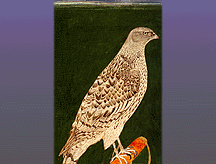

|
This course focuses on the multi-faceted interface between literary text and visual image in traditional South Asia. Our primary focus is on the two Sanskrit epics, Mahabharata and Ramayana. Both epics will be read in
abridged translation to provide
familiarity with the overall narrative structure and thematic concerns of the two texts, and a number of excerpts from unabridged translations will be studied in detail to arrive at a fuller understanding of the contents
of key episodes and of the style a
nd texture of the two works. The first part of the course addresses a series of questions pertaining to the literary versions of the Mahabharata and Ramayana: What is epic as a genre, and what are its social roles? Do
the Mahabharata and Ramayana manife
st similarities that permit us to identify a distinctive "Indian" epic type? What are the connections between these epics and the early history of India? Why, and how, did the written texts we have today come to be
redacted from bodies of oral tradition
? What further transformations did the Sanskrit epics undergo as they were dramatized in the Sanskrit theater, recast in the form of lyric poetry, and "translated" into various vernacular languages such as Hindi, Tamil,
and Telugu? In the second part of
the course, we will shift our focus from epic as literature to consider different types of visual embodiments of the epics, ranging from spatial mappings of epic geography onto local landscapes to illustrated manuscripts
and painted scrolls used as
instruments for oral epic performance. Our overarching concerns will be to understand the shifting modes of relationship between image and text: does the image always follow and serve the text, suggesting that a textual
embodiment of epic is primary, or
are there cases in which the visual embodiment is primary and the text follows its lead?
This course requires no prior knowledge of Indian literature, history, or art, and may serve as an effective introduction to the
culture and civilization of South
Asia
Unless preregistered students attend the first class meeting or communicate directly with the instructor prior to the first class, they will be dropped from the class list. NOTE: Students must still submit a completed Drop/Add form to the Registrar's Office.
COURSE FORMAT: Lecture/Discussion
Level: UGRD Credit: 1 Gen Ed Area Dept: NONE Grading Mode: Graded
Prerequisites: NONE
Last Updated on MAR-19-2002
Copyright Wesleyan University, Middletown, Connecticut, 06459